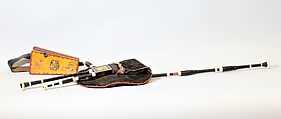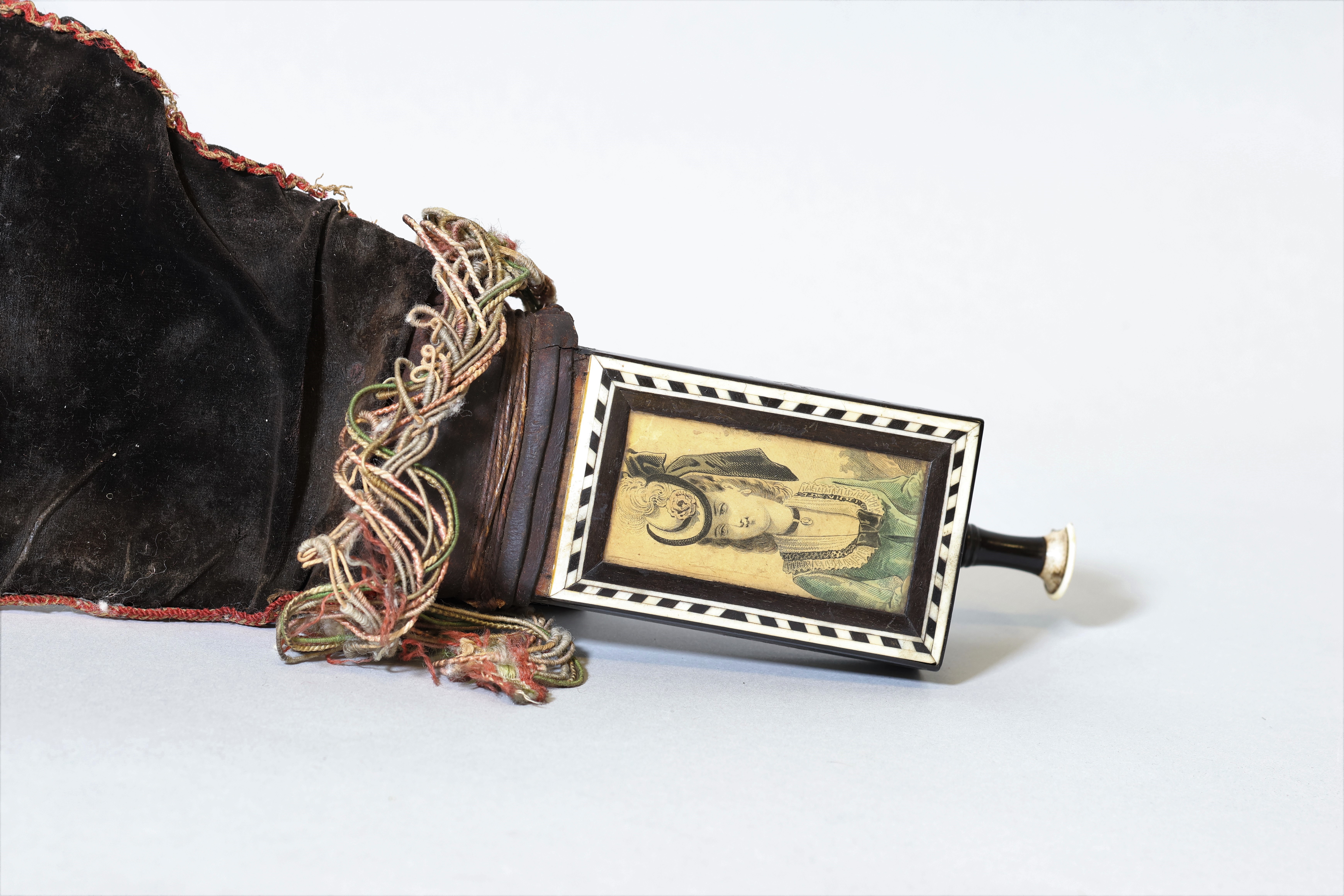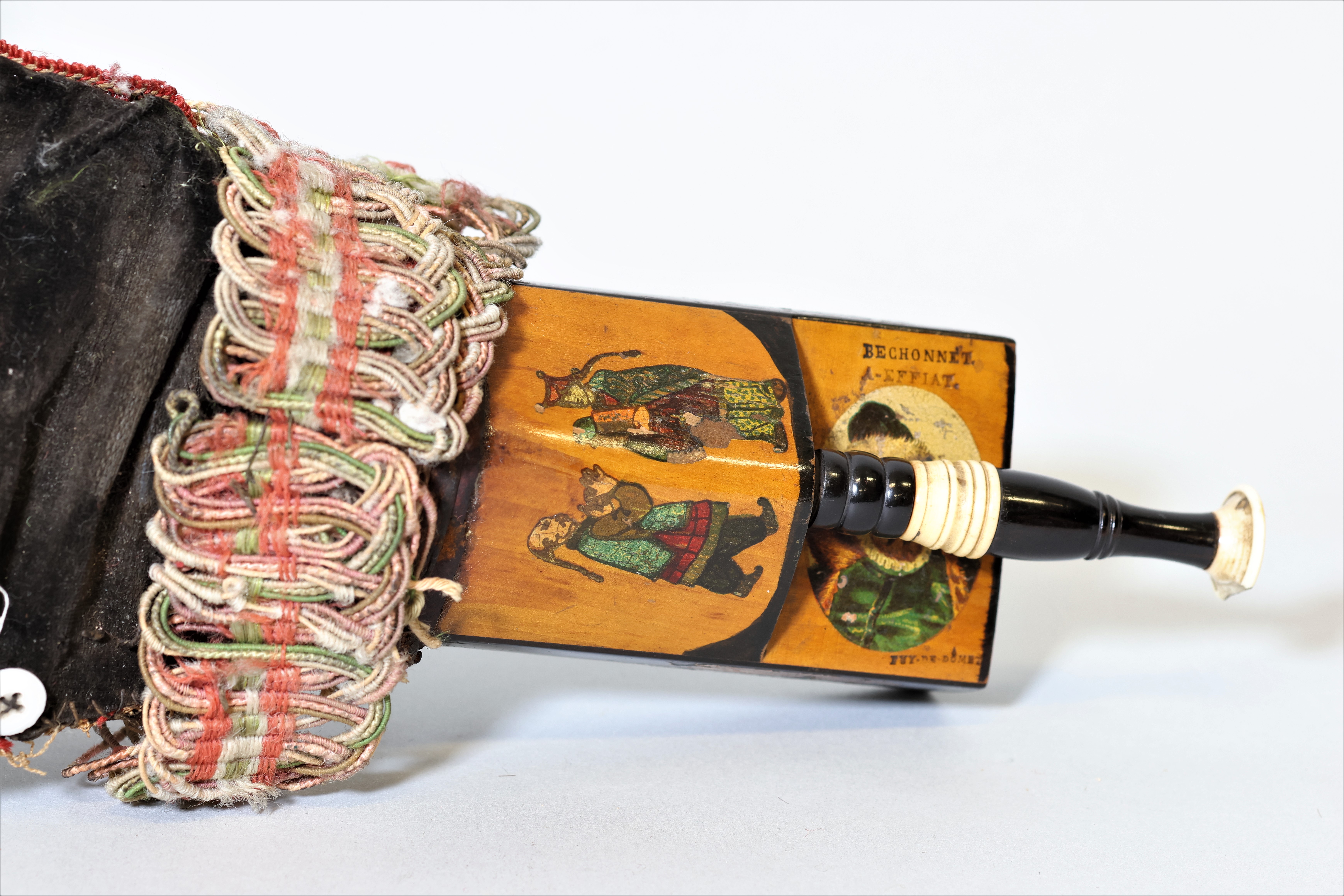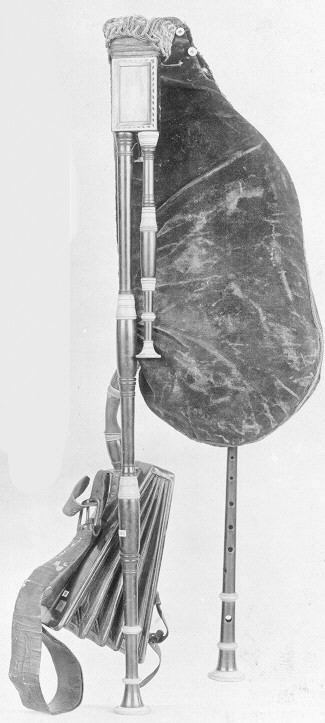Cornemuse Béchonnet
Joseph Bechonnet French
Not on view
This bagpipe was made by Joseph Béchonnet in June 1874 in Effiat, Puy-de-Dôme, France. It is signed by Béchonnet on the chanter/tenor drone stock, and on the bellows. The bellows have an internal handwritten label, with the inscription: Béchonnet/à Effiat/Puy de Dôme/1974/Juin. The bagpipe has a veneered box, inlaid with ivory and dark wood, either blackwood or ebony. The leather bag is covered with a green velvet case, fringed with two types of passementerie trimmings: a wide weaving pattern at the chanter/tenor drone stock opening, and a tight, red weave at the seams of the bag. A small white button closes the wider stock opening. The bellows and the chanter/tenor drone stock are decorated with transfers, depicting a wide range of figures (see technical description).
Joseph Béchonnet (1820-1900) was one of the most renowned bagpipe makers of 19th century France. He was active from 1846 until his death in 1900 (Chassaing 1982). Béchonnet was part of a new movement of instrument makers who started building smaller, brighter instruments with more expensive materials than the ones traditionally played in the area (Blanc 1987). Béchonnet bagpipes were sought after instruments; they were popular and bought by musicians and musical instrument sellers across France (Chassaing 2015:103).
This instrument was donated to the museum by Joseph Drexel in 1885. Drexel formed an instrument collection in 1884 and organized an exhibit at the Metropolitan Museum in 1885, creating the foundations for Mary Elizabeth Brown’s subsequent donation in 1889 (Lindsey 2014).
(Cassandre Balosso-Bardin, 2023)
Technical Description
Conical single chanter of ebony with ivory bell: 7/1 holes, 2 ventholes;
Cane double reed on metal staple (cane part broken off);
3 drones, cylindrical bore, tenor with single cane reed, bass and treble reeds probably similar;
Green and red leather bellows with tops of light-colored wood with curved wooden pipe that fits against player's side, leather wrist and arm straps;
Sheep or cowhide bag covered with green velvet trimmed with red and white braid, with band of red, green, and silver braid around chanter stock;
Flat rectangular stock for chanter, tenor, and soprano drone, separate cylindrical stocks for bass drone and bellows;
All pipes, bellows and bass drone stocks decorated with ivory or antler mounts and ferrules;
Chanter stock of light colored wood with sides painted black, the back and sides showing decal of Chinese men playing instruments, a man's head and a fox, the front forming a frame for a portrait of a woman, edged with ebony and ivory inlay;
The outer side of bellows decorated with decoupage figure of birds and a forest.
References
Blanc, Bernard, 1987. Etude sur les cornemuses du centre de la France : cabrettes et musettes. St Cristophe : Blanc.
Chassaing, Jean-François, 2015. Béchonnet et les cornemuses en France. Jenzat : Maison du luthier/musée
Chassaing, Jean-François, 1982. La tradition de cornemuse en Basse-Auvergne et Sud-Bourbonnais. Moulin : Editions Ipomée
Lindsey, Rebecca, 2014. ‘Joseph W. Drexel and the Beginnings of the Met's Musical Instrument Collection’. Published online 30 January 2014. https://www.metmuseum.org/blogs/of-note/2014/joseph-drexel
Due to rights restrictions, this image cannot be enlarged, viewed at full screen, or downloaded.
This artwork is meant to be viewed from right to left. Scroll left to view more.





